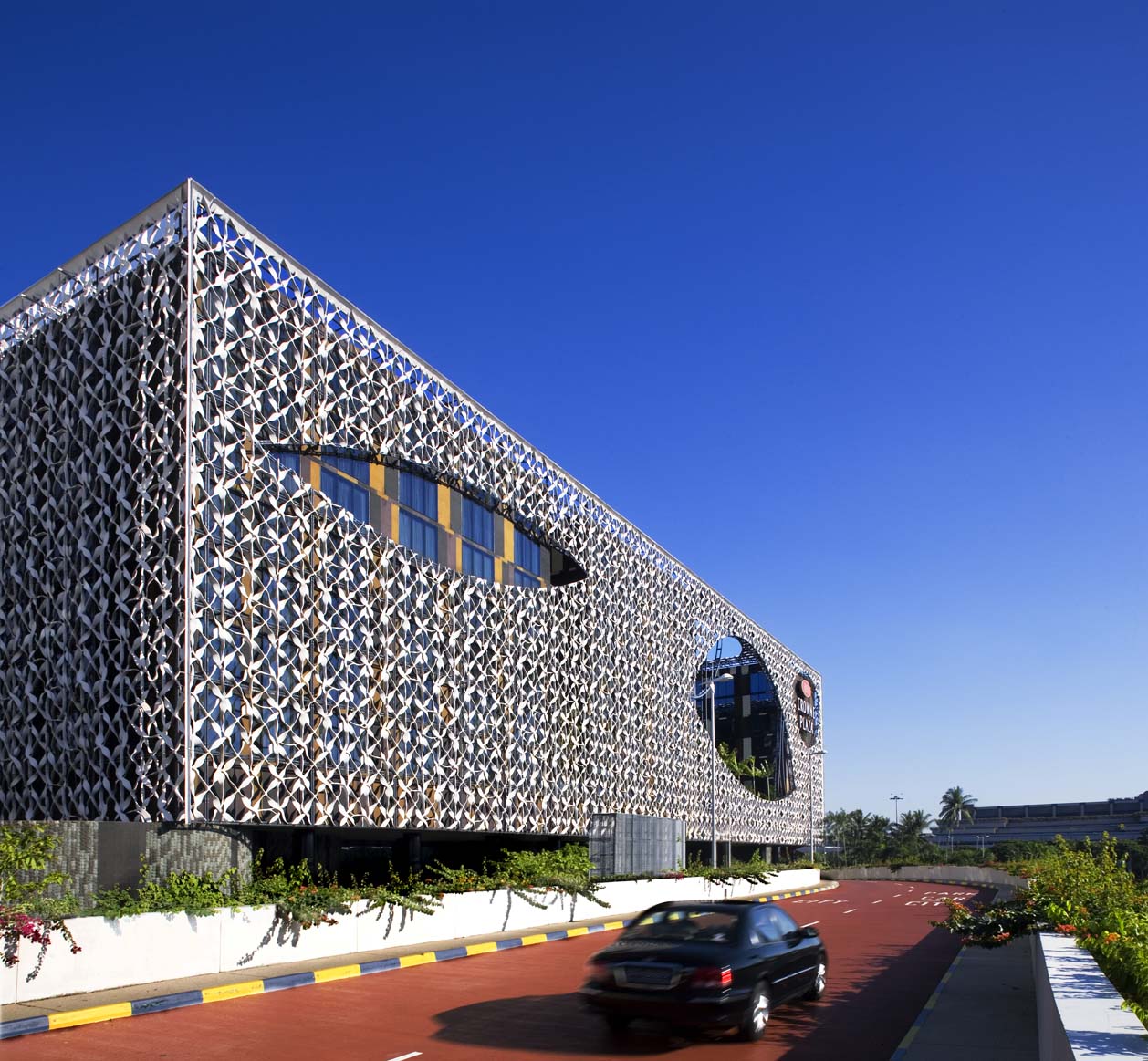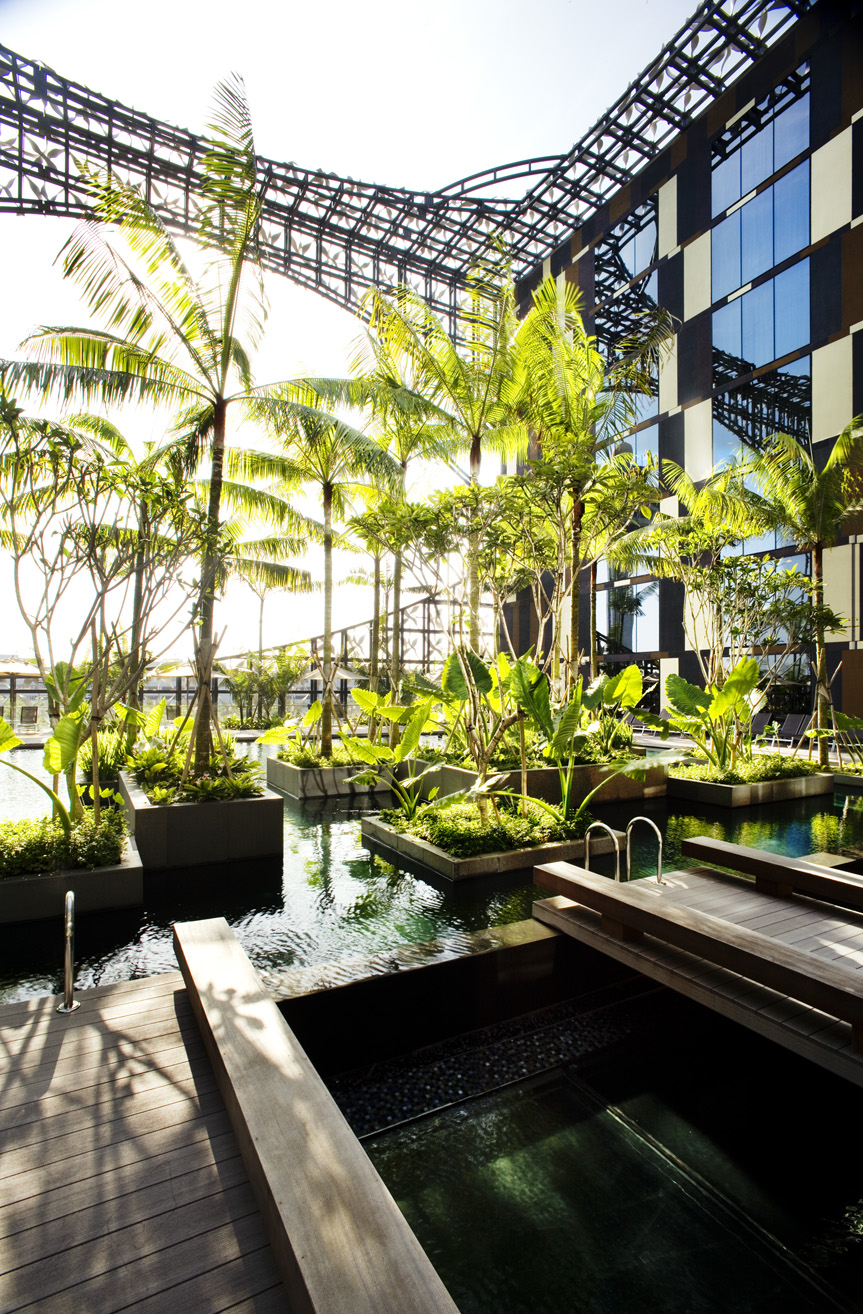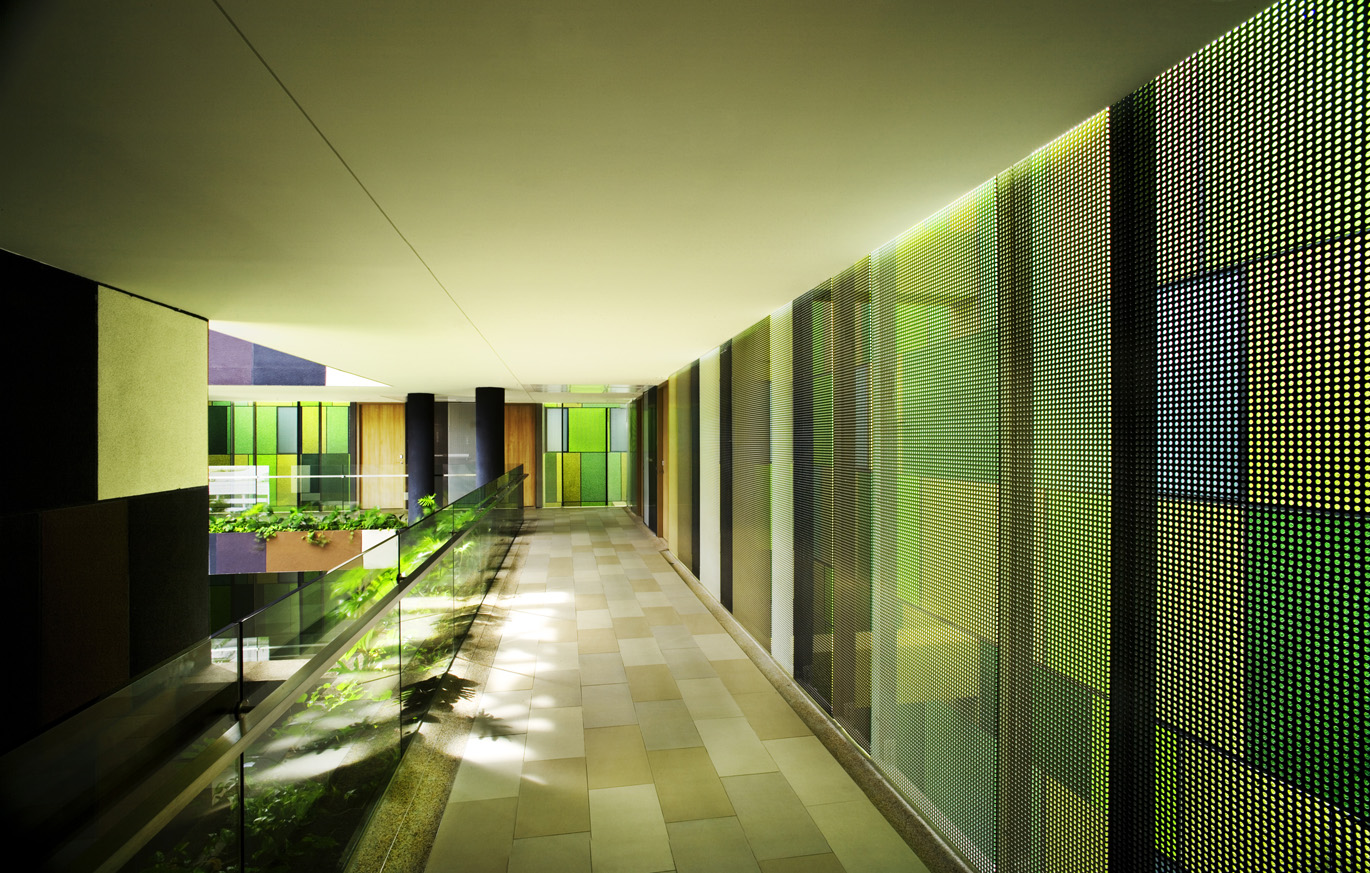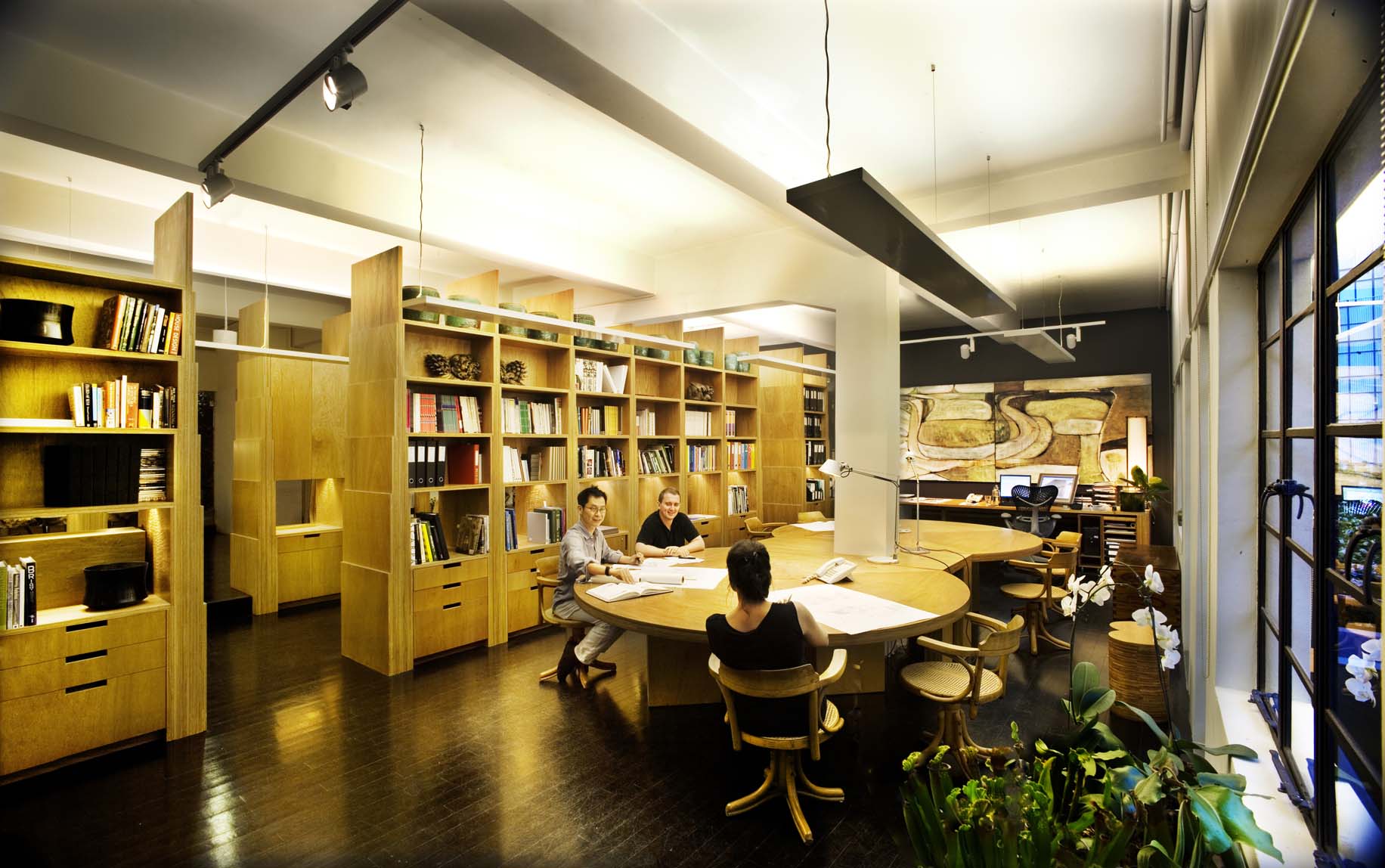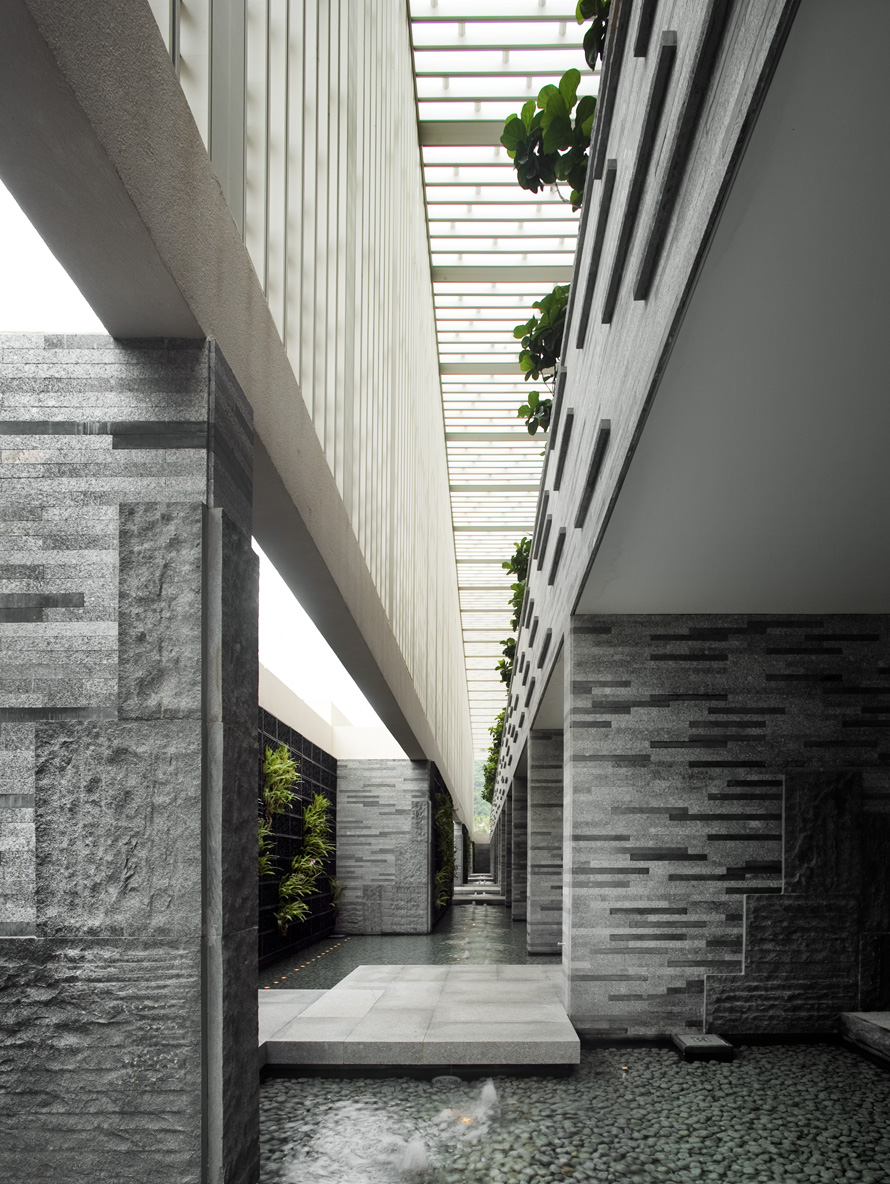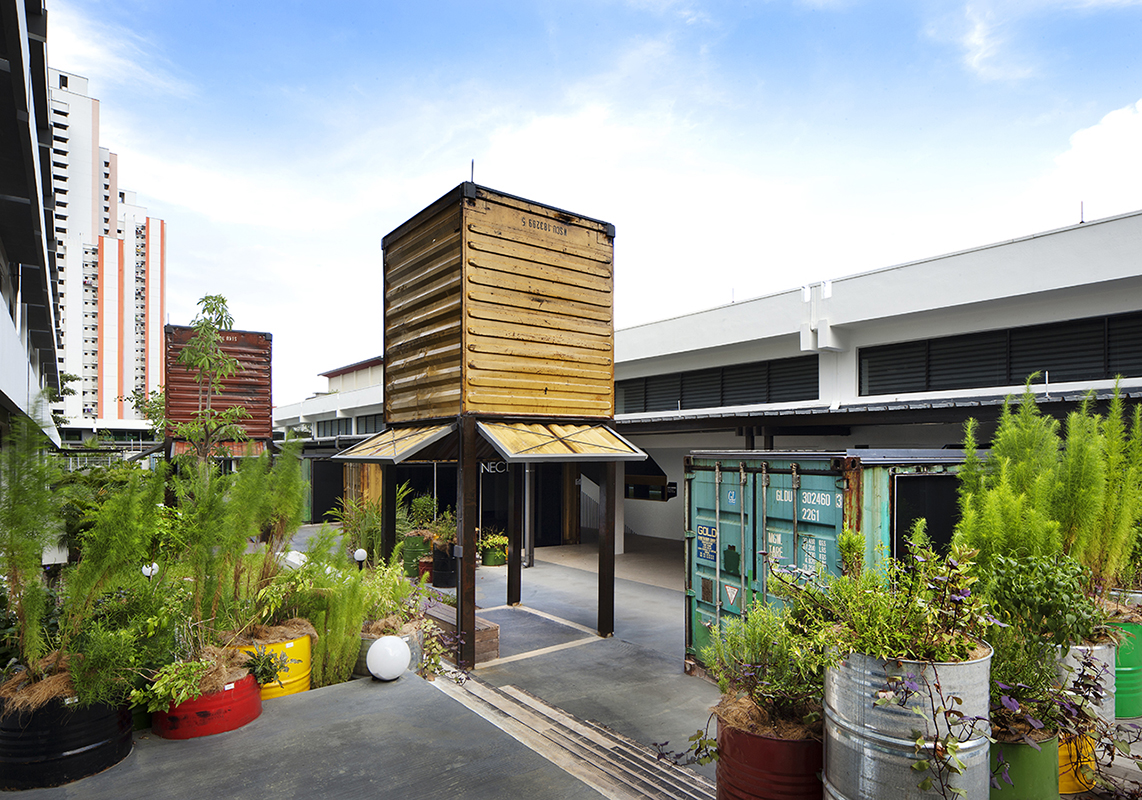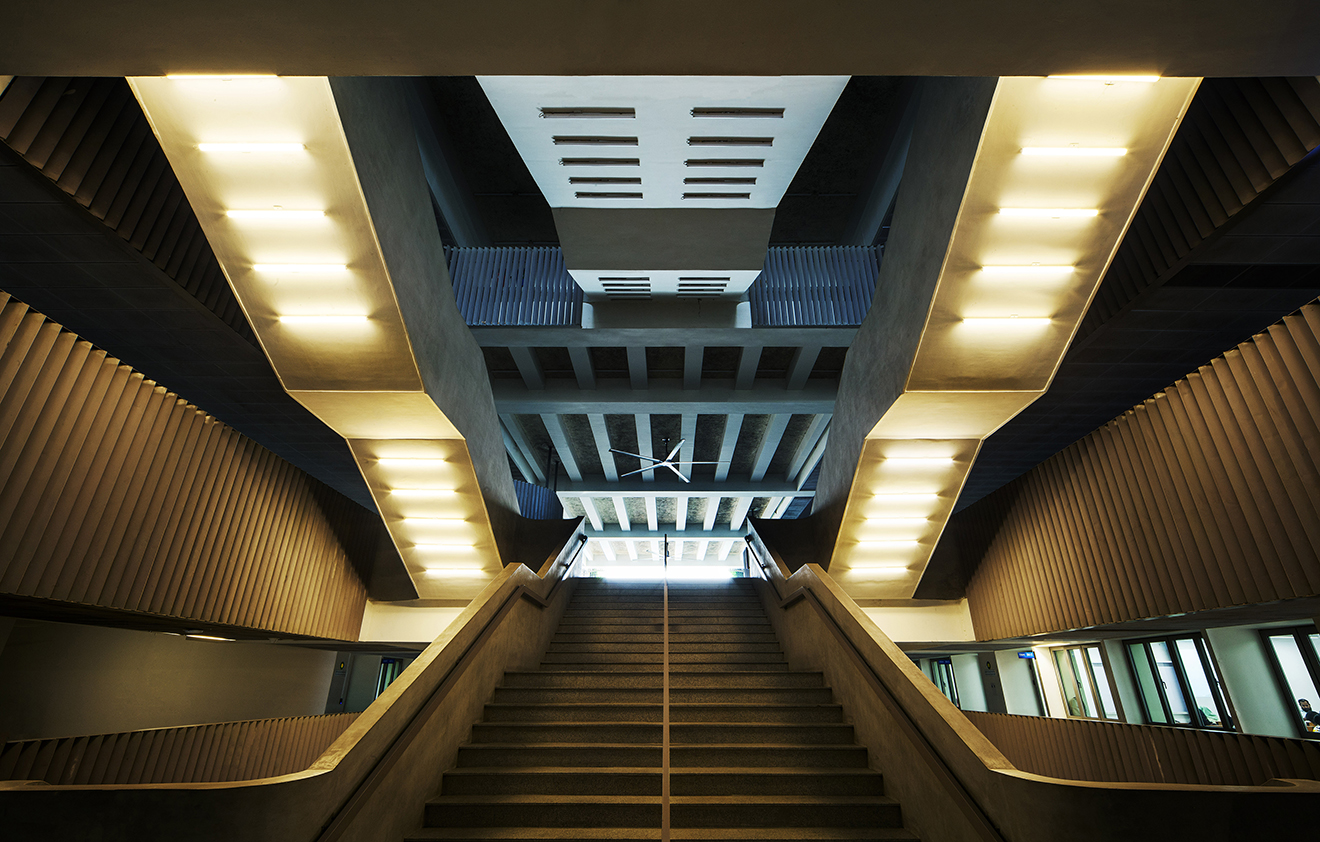MeyerHouse
Along Meyer Road, in Singapore’s eastern residential enclaves, sits a condominium development housing 56 dwelling units adjacent to a 1 hectare forested park. The 5-storey with attic development is arrayed in a contiguous ‘C’ configuration with residences looking out onto a 50m by 75m internal forested garden that spills out onto the adjacent park.
Living spaces extend onto large outdoor rooms nestled amongst tall forest trees set amidst a formal English garden. Terracing gardens and water bodies cascade down onto a lower ground arrival level, opening up the subterranean arrival lobbies and facilities to natural daylight, ventilation and greenery.
From street level, the building is scaled to the proportions of a traditional French Chateau with a stately façade of customized louvers and panelling that envelops the entire form. The louvered façade is inclined to secure privacy for units from street level. The façade finishes extend onto the roof, creating an envelope that is sculptural and abstract.
Internally, the forested garden is cocooned by timber blinds that screen the residences imbuing the tranquil garden spaces with warmth and character. Within the garden, a long pool set centrally along the main axial views of the forested park reflect the tall trees and warm facades of the development. The pool is overlooked by guest and entertainment facilities that house a generous dining room, a cosy lounge and outdoor activity decks.



























